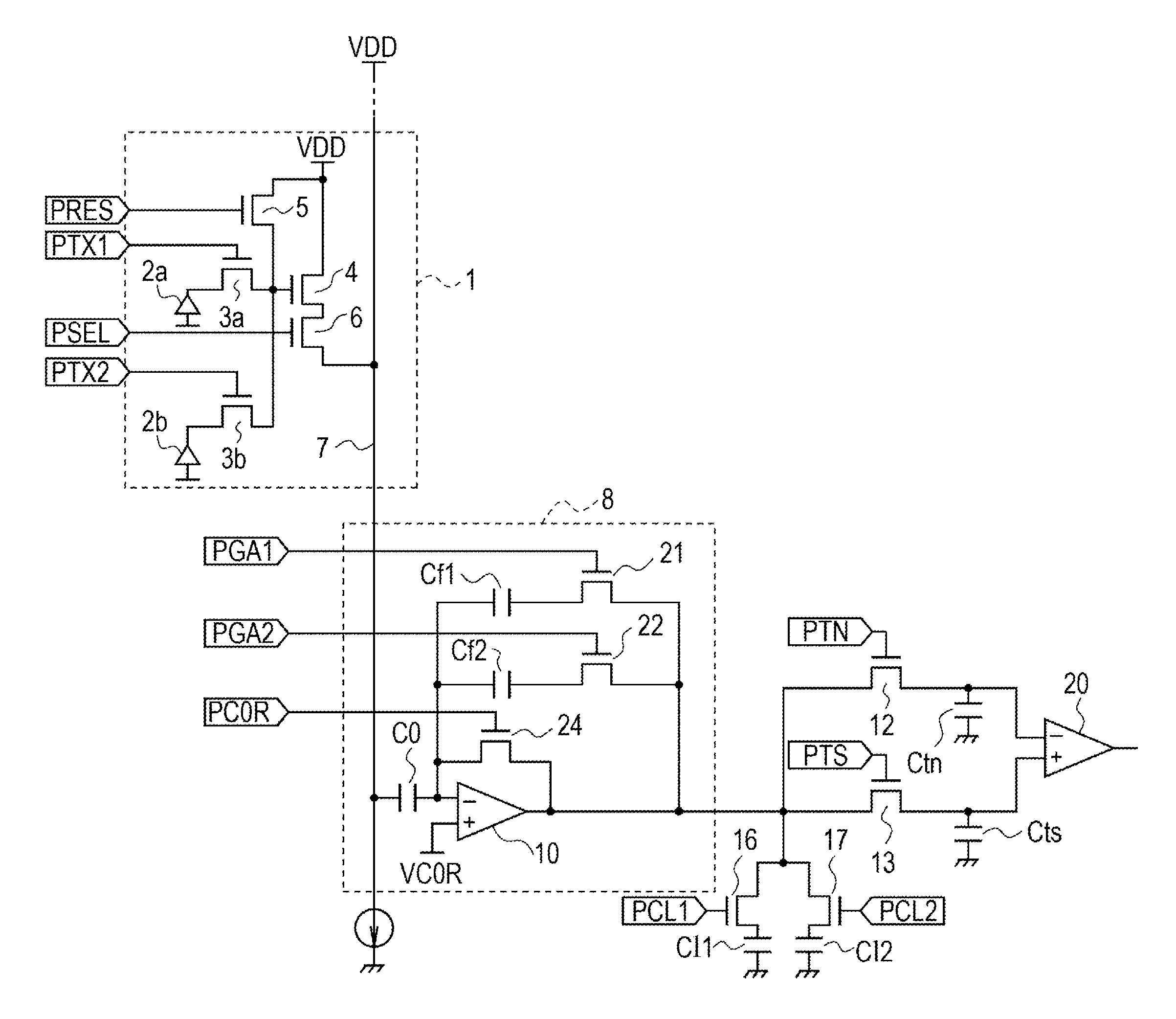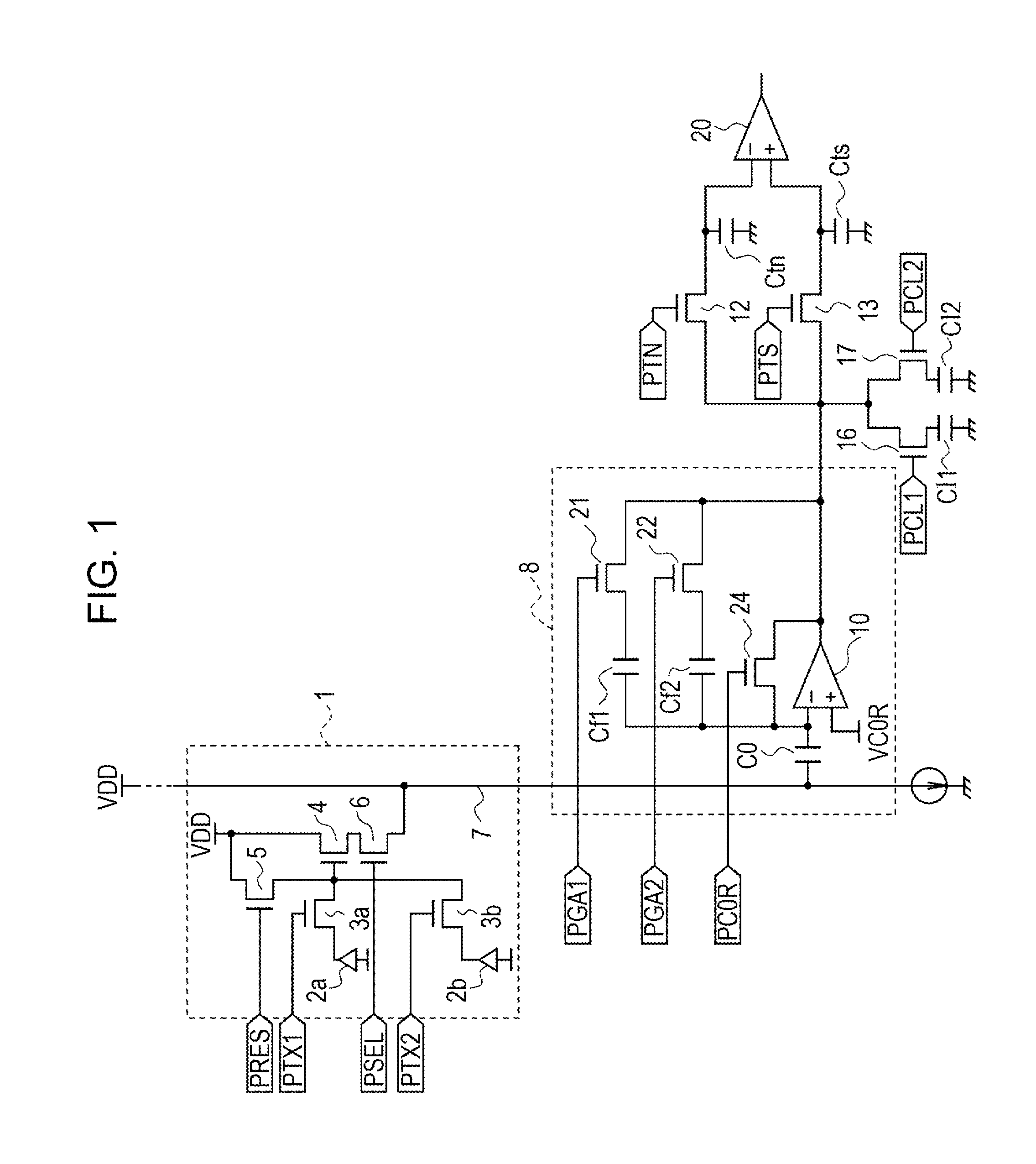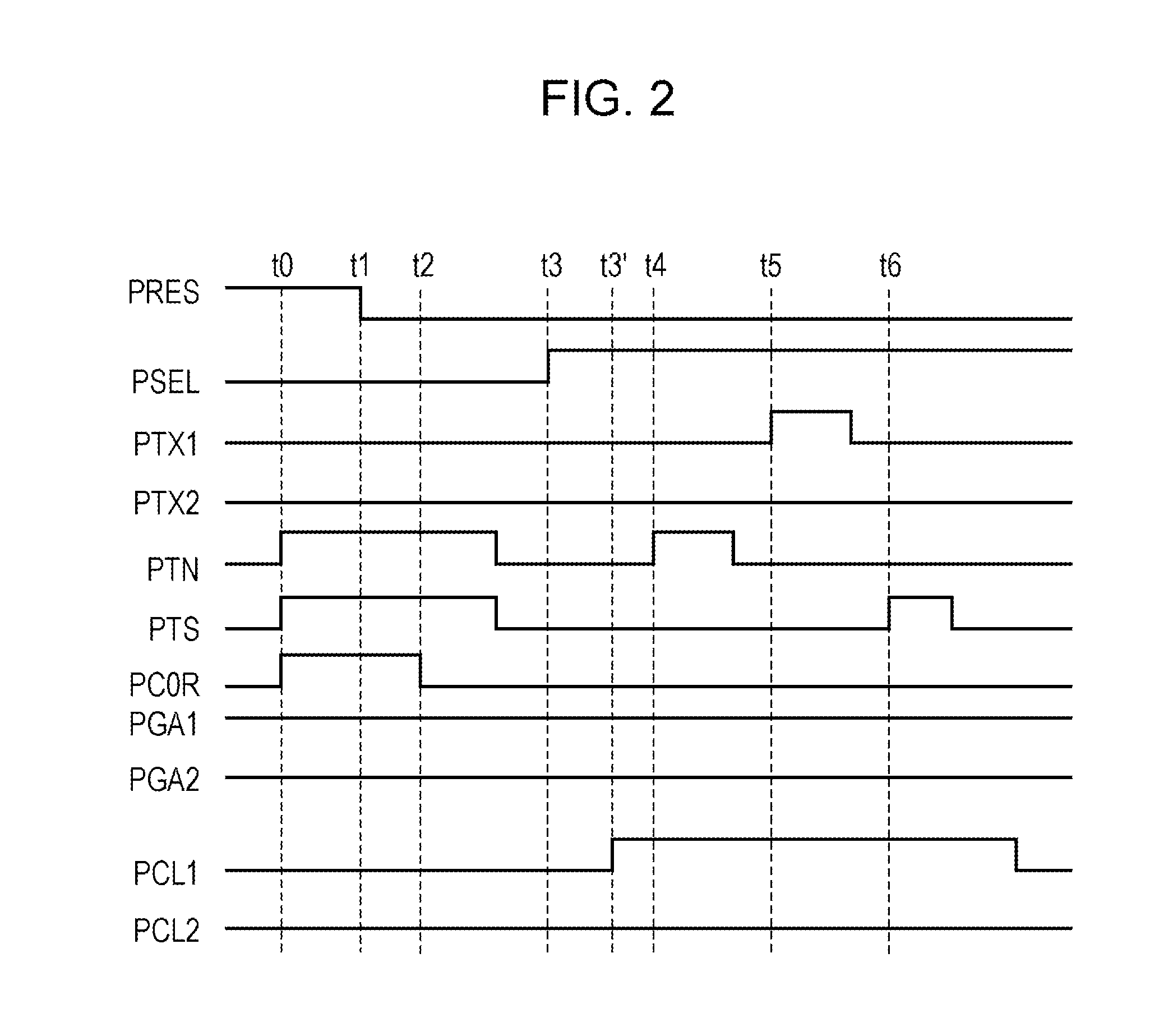Solid-state image pickup device
a solid-state image and pickup device technology, applied in the field of solid-state image pickup devices, can solve the problems of increasing the integral value of random noise, limited amplifier bandwidth, increasing signal bandwidth, etc., and achieve the effect of reducing random noise and improving the signal-to-noise ratio
- Summary
- Abstract
- Description
- Claims
- Application Information
AI Technical Summary
Benefits of technology
Problems solved by technology
Method used
Image
Examples
first embodiment
[0021]FIG. 1 is an equivalent circuit diagram of a pixel section and a readout circuit for one column of a solid-state image pickup device according to a first embodiment of the present invention. As for the pixel section, pixels in two rows and one column among a plurality of pixels that are two-dimensionally arranged are illustrated. The pixel section 1 includes photoelectric conversion elements 2a and 2b, transfer transistors 3a and 3b, a source follower transistor 4, a reset transistor 5, and a row-selection transistor 6. Metal-oxide semiconductor (MOS) transistors may be used as these transistors. Hereinafter, the transfer transistors 3a and 3b are referred to as transfer MOSs 3a and 3b, the source follower transistor 4 is referred to as an SFMOS 4, the reset transistor 5 is referred to as a reset MOS 5, and the row-selection transistor 6 is referred to as a row-selection MOS 6. The photoelectric conversion elements 2a and 2b are photodiodes, for example, which are provided in ...
second embodiment
[0045]Hereinafter, a description will be given of a solid-state image pickup device according to a second embodiment of the present invention and a method for driving the solid-state image pickup device. The circuit diagram of the solid-state image pickup device according to the second embodiment is the same as that illustrated in FIG. 1 according to the first embodiment. FIG. 5 is a timing chart illustrating an exemplary operation of the solid-state image pickup device (FIG. 1) according to the second embodiment. The timing chart in FIG. 5 is different from the timing chart in FIG. 2 regarding the signals PCL1 and PCL2. Hereinafter, the points different from the timing chart in FIG. 2 will be described with reference to FIG. 5. The amplification factor of the amplifying circuit unit 8 is the same as that in FIG. 2, that is, C0 / (Cf1+Cf2). At time to, the levels of the signals PCL1 and PCL2 are changed to be high. Accordingly, the control switches 16 and 17 are turned on, and the out...
third embodiment
[0051]A solid-state image pickup device according to a third embodiment of the present invention is realized by combining the first and second embodiments. The circuit diagram of the solid-state image pickup device according to the third embodiment is the same as that illustrated in FIG. 1. FIG. 7 is a timing chart illustrating an exemplary operation of the solid-state image pickup device according to the third embodiment. The timing chart in FIG. 7 is different from the timing chart in FIG. 5 regarding the signal PCL1. Hereinafter, the points different from the timing chart in FIG. 5 will be described with reference to FIG. 7. As in FIG. 2, at time t3′ after time t3, the level of the signal PCL1 is changed to be high again. Accordingly, the control switch 16 is turned on, and the output node of the amplifying circuit unit 8 is connected to the load capacitor Cl1. Then, after time t6, the level of the signal PCL1 is changed to be low. Accordingly, the control switch 16 is turned off...
PUM
 Login to View More
Login to View More Abstract
Description
Claims
Application Information
 Login to View More
Login to View More - R&D
- Intellectual Property
- Life Sciences
- Materials
- Tech Scout
- Unparalleled Data Quality
- Higher Quality Content
- 60% Fewer Hallucinations
Browse by: Latest US Patents, China's latest patents, Technical Efficacy Thesaurus, Application Domain, Technology Topic, Popular Technical Reports.
© 2025 PatSnap. All rights reserved.Legal|Privacy policy|Modern Slavery Act Transparency Statement|Sitemap|About US| Contact US: help@patsnap.com



